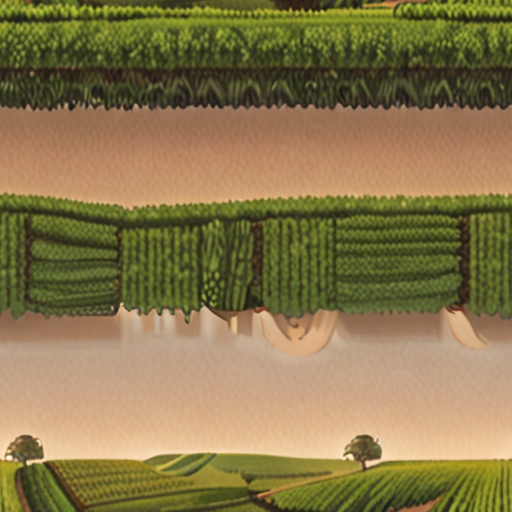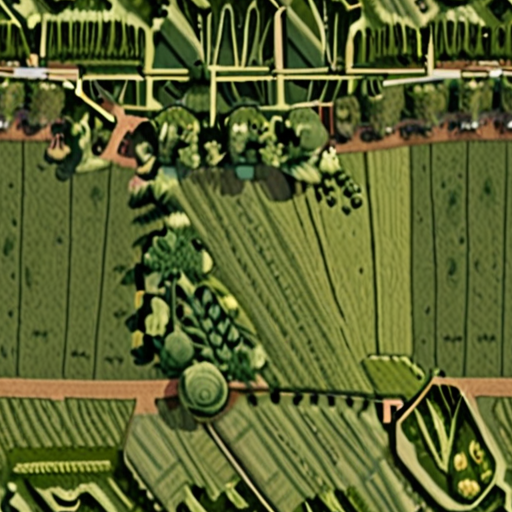Sustainable agriculture has been gaining momentum globally, with farmers and environmentalists alike seeking innovative solutions to improve soil health, reduce carbon emissions, and promote ecosystem services. At the forefront of this movement is biochar, a versatile and potent tool that has garnered significant attention in recent years. By harnessing the regenerative potential of biochar, farmers can unlock a wealth of benefits, from enhanced crop yields and improved water retention to increased biodiversity and reduced greenhouse gas emissions. However, amidst the excitement surrounding biochar, several questions remain unanswered – what are its downsides, how effective is it in improving soil health, and what role does carbon sequestration play in its production?

The Downsides of Biochar
Biochar has gained popularity as a sustainable solution for reducing greenhouse gas emissions and promoting soil health.
- However, there are several downsides to consider:
-
1. Uneven History: Biochar production can contribute to deforestation and increase greenhouse gas emissions if not done sustainably.
-
2. Soil Alkalinity: Applying biochar to fields can raise alkalinity levels, which may require soil testing and analysis before addition.
-
3. Lack of Standardization: Biochar production methods vary widely, leading to inconsistent quality and potential negative impacts on soil health.
-
4. High Production Costs: Creating high-quality biochar can be expensive, making it inaccessible to many farmers and landowners.
-
5. Storage and Transportation Challenges:
-
6. Potential Impact on Microbial Communities: Biochar can alter microbial populations in soil, potentially disrupting ecosystem balance.
-
7. Regulatory Uncertainty: Biochar is still a relatively new technology, and regulatory frameworks are evolving to address its use and potential impacts.
While biochar offers numerous benefits, these drawbacks highlight the need for careful consideration and responsible implementation to maximize its potential while minimizing risks.
The Controversy Surrounding Biochar
Biochar has been touted as a game-changing solution for reducing greenhouse gas emissions and promoting sustainable agriculture, but its production and application have sparked intense debate among scientists, policymakers, and environmentalists.
- Negative Effects on Soil Fertility: Research suggests that high doses of biochar can lead to reduced soil fertility, decreased microbial activity, and altered nutrient cycling patterns.
- Impact on Water Availability: Some studies indicate that biochar can increase water retention in soils, potentially exacerbating drought conditions in already water-scarce regions.
- Soil Erosion Concerns: The large-scale production of biochar may contribute to increased soil erosion, particularly in areas with poor land management practices.
- Lack of Standardization: The biochar industry lacks standardized production methods, leading to inconsistent product quality and variable environmental impacts.
- Competing Interests: The biochar market is driven by competing interests between companies seeking to profit from its sale and proponents advocating for its use as a climate mitigation strategy.
As a result, the biochar industry faces significant challenges in addressing these controversies and ensuring the long-term sustainability of its products and applications.
Addressing the Controversies
To mitigate the negative consequences associated with biochar production and application, several strategies can be employed:
- Implementing Sustainable Production Methods: Companies and researchers must work together to develop and promote environmentally friendly production techniques that minimize waste and optimize resource utilization.
- Ensuring Quality Control: Establishing rigorous testing protocols and certification standards can help guarantee the consistency and efficacy of biochar products.
- Fostering Collaboration and Transparency: Industry stakeholders, policymakers, and civil society organizations must engage in open dialogue to address concerns, share knowledge, and develop evidence-based policies.
- Supporting Research and Development: Continued investment in scientific research and development is essential for understanding the complex interactions between biochar, soil, and ecosystems, as well as identifying opportunities for innovation and improvement.
Conclusion is Not Required

Is Biochar Regenerative?
Biochar plays a vital role in regenerative agriculture by improving soil health, reducing the need for fertilizers and water, and promoting ecosystem services.
-
The Science Behind Biochar
Biochar is created through a process called pyrolysis, which involves heating organic materials in the absence of oxygen, resulting in a stable carbon-rich material.
-
Benefits of Biochar in Regenerative Agriculture
Biochar has numerous benefits for regenerative agriculture, including:
- Improved soil fertility and structure
- Increased water retention and reduced erosion
- Enhanced microbial activity and biodiversity
- Reduced greenhouse gas emissions and improved carbon sequestration
-
Regenerative Agriculture Practices Using Biochar
Regenerative agriculture practices that incorporate biochar include:
- No-till or reduced-till farming
- Cover cropping and crop rotation
- Integrated pest management and polyculture
- Agroforestry and permaculture
-
Challenges and Limitations of Biochar Use
While biochar offers many benefits, there are also challenges and limitations to its use, including:
- High production costs and limited availability
- Potential contamination risks and regulatory issues
- Limited understanding of long-term effects on ecosystems
-
Future Directions for Biochar Research and Development
To fully realize the potential of biochar in regenerative agriculture, further research and development are needed to address the challenges and limitations outlined above, including:
- Improving production efficiency and scalability
- Developing standardized testing protocols and certification programs
- Investigating synergies with other regenerative agriculture practices

Cost of Biochar Per Acre
The cost of biochar per acre varies depending on several factors, including the type of feedstock used, production methods, and application rates.
- Wood biochar, which is commonly produced through pyrolysis, typically costs around $3,580 per acre.
- This estimate includes the cost of producing 35 tons of wood biochar, plus 8 tons of application material, which amounts to approximately $3,580 per acre.
- Applying a lower amount of biochar over 2 to 3 years can help spread the cost over multiple cropping seasons.
At Pyrolysium, we believe that sustainable living and eco-friendly technologies play a crucial role in reducing our environmental footprint.
We strive to educate and inspire individuals about the benefits of pyrolysis, a process that transforms waste materials into valuable resources like biochar.
Our mission is to promote environmentally conscious practices and provide actionable insights into sustainability, eco-technology advancements, and waste management solutions.
Some of our competitors in the field of biochar production include TerraVia Holdings and LanzaTech, both of which offer innovative approaches to sustainable biomass conversion.
TerraVia Holdings focuses on developing microorganisms that convert biomass into high-value chemicals, fuels, and food ingredients.
LanzaTech, on the other hand, uses gas fermentation technology to convert biomass into low-carbon fuels and chemicals.
Both companies share our commitment to sustainability and reducing greenhouse gas emissions.
However, at Pyrolysium, we remain focused on promoting the benefits of pyrolysis and biochar production as a means of achieving a more circular economy.
For more information on our approach to sustainable living and eco-friendly technologies, please visit our website at https://pyrolysium.org/ .
Cost of 1 Ton of Biochar
The cost of 1 ton of biochar varies depending on several factors, including production methods, raw materials, and location.
- Pyrolysis-based biochar: The average cost of producing 1 ton of biochar through pyrolysis is around $300-$500.
- Carbonization-based biochar: The cost of producing 1 ton of biochar through carbonization is typically lower, ranging from $200-$400.
- Biomass-based biochar: The cost of producing 1 ton of biochar from biomass is generally higher, ranging from $500-$700.
It’s worth noting that these prices are estimates and may vary depending on various factors, such as the type of feedstock used, the efficiency of the production process, and the local market conditions.
Market Trends and Outlook
The global biochar market is expected to grow significantly in the coming years, driven by increasing demand for sustainable agriculture practices and renewable energy sources.
- Increasing adoption of regenerative agriculture: As more farmers and agricultural companies adopt regenerative agriculture practices, the demand for biochar is expected to increase.
- Rising interest in carbon sequestration: Governments and corporations are increasingly investing in carbon sequestration projects, which includes the use of biochar as a carbon sink.
- Growing demand for renewable energy: The growing demand for renewable energy sources, such as solar and wind power, is driving the development of new bioenergy technologies, including biochar production.
Conclusion
The cost of 1 ton of biochar varies depending on several factors, including production methods, raw materials, and location. However, with the growing demand for sustainable agriculture practices and renewable energy sources, the global biochar market is expected to continue growing in the coming years.

The Lifespan of Biochar
Biochar, a type of charcoal produced through pyrolysis, has gained significant attention in recent years due to its potential benefits for soil health, carbon sequestration, and climate change mitigation.
- Stability of Biochar
- Factors Affecting Biochar Stability
- Feedstock: Different types of biomass can result in varying levels of biochar stability.
- Processing conditions: Temperature, heating rate, and oxygen availability during pyrolysis can affect biochar stability.
- Environmental conditions: Soil pH, moisture, and microbial activity can impact biochar degradation rates.
- Implications for Carbon Sequestration
- Conclusion
The stability of biochar varies depending on factors such as feedstock, processing conditions, and environmental conditions. Research suggests that the majority of the carbon in biochar is in a highly stable state, with a mean residence time of 1000 years or longer at a mean annual temperature of 10°C.
Several factors can influence the stability of biochar, including:
The long-term stability of biochar makes it a promising tool for carbon sequestration. By incorporating biochar into soils, we can potentially lock away carbon for centuries, reducing atmospheric CO2 levels and mitigating climate change.
In conclusion, the lifespan of biochar is influenced by various factors, including feedstock, processing conditions, and environmental conditions. As researchers continue to study the properties and applications of biochar, we may uncover new opportunities for sustainable land management, carbon sequestration, and climate change mitigation.

0 Comments